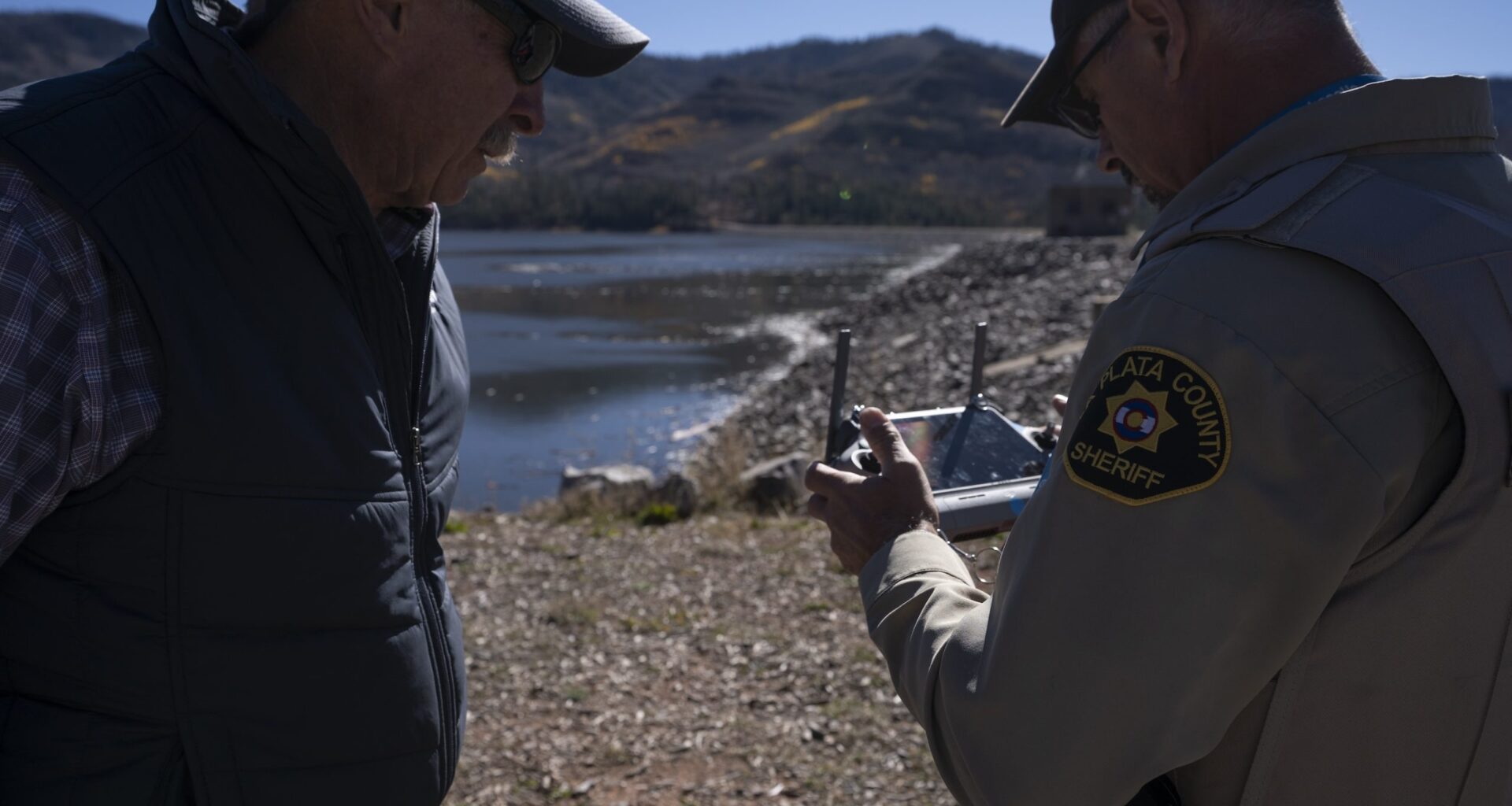VALLECITO — The October floods in southwestern Colorado damaged homes and upended people’s lives, but there was one silver lining: A lot of the water also helped replenish reservoirs in the state.
The deluge, caused by tropical storms and hurricanes in the Pacific Ocean, dumped more than 480 billion gallons of water on five counties in southwestern Colorado. The flooding between Oct. 9 and 15 prompted evacuations, boil water advisories and repair work for residents, roads and bridges.
But the water also bumped parts of the region out of severe and extreme drought. The amount of water stored in Colorado reservoirs surged or even doubled.
“Some of the smaller, more local reservoirs saw significant improvement,” said Peter Goble, a climatologist for the Colorado Climate Center at Colorado State University. “If we look at our reservoir giants, like Powell and Mead, unfortunately at that scale this is kind of a drop in the bucket.”
The storms mainly impacted parts of La Plata, Archuleta, Mineral, Hinsdale and San Juan counties. Before Oct. 9, most of the area was experiencing moderate to extreme drought, according to the U.S. Drought Monitor.
Goble estimated that about 5 inches of rain, on average, fell on the counties in mid-October. Some totals reached 10 inches or higher in some areas or broke historical records, he said.
The resulting floods were the worst since the early 1900s. In Archuleta County, the October floods ranked third largest after events in 1911 and 1927, according to a study by Western Water Assessment at the University of Colorado.
At Vallecito Reservoir in northeastern La Plata County, Ken Beck spent part of Wednesday working with a drone pilot to assess the amount of downed trees, decks, housing materials — including a hot tub — and other flood debris in the reservoir.
“We’re trying to get our thoughts (pulled together) on where we are and where we need to go next,” said Beck, superintendent of the Pine River Irrigation District, which operates the reservoir.
Where did the water go?
The soils soaked up the rain first.
Southwestern Colorado has been in a drought for the better part of two decades. And in late September, the ground was dry and ready for moisture. In most cases, the soil could soak up about 4 or 5 inches of rain, but after that the root zone would be saturated, Goble said.
And if the rain fell too fast, then the soils couldn’t absorb it quickly enough, sending more water to flood creeks, irrigation ditches and neighborhoods, like the Vallecito community where almost 400 homes were evacuated.
By Oct. 28, most of the five-county region was completely out of drought or much improved, with abnormally dry conditions instead of extreme drought, according to the U.S. Drought Monitor.
Although some of the water evaporated, the runoff into rivers and streams eventually flowed into reservoirs in the Rio Grande Basin or the Colorado River Basin. These lakes and dams act as a vital savings bank for summer irrigation and help pace the flow of water throughout the West.
Vallecito Reservoir held about 43% of its median storage at the end of September based on data from 1991 to 2020. By the end of October, its storage was at 138% of the norm.
“The reservoir came up 25 feet in a matter of hours,” Beck said.
Statewide, Colorado’s reservoir capacity was 84% of the norm as of Wednesday.
About 48 billion gallons of water, or 150,000 acre-feet, flowed into Navajo Reservoir, a large federal water project that is part of the Colorado River Storage Project. (Acre-feet is the more common unit of measurement for reservoir storage. One acre-foot equals 325,851 gallons, or roughly the annual water use of two to three households.)
Navajo Reservoir’s storage increased from 64% of the norm in September to 73% in October, Goble said. Its releases go to farms, ecosystems and communities in New Mexico before ultimately reaching Lake Powell, an immense reservoir on the Utah-Arizona border.
Since most of the water was split among reservoirs, the soil or evaporation, only a small amount made it into larger reservoirs downstream, like Lake Powell and Lake Mead, both of which sit at about 30% of their capacity.
“Even if all this water went into one of those reservoirs, it wouldn’t have been enough to bring that reservoir back to average,” Goble said.
Looking ahead to the spring
Goble, community members and reservoir managers are already looking to the winter and spring.
The moisture in the soils will freeze once the temperatures drop consistently, possibly locking in a healthy level of saturation. That could lead to more water flowing into streams and reservoirs — instead of being absorbed by dry soils — during spring runoff, leaving more available to water users next summer.
Starting the season with more water in reservoirs could help farmers and ranchers, especially later in the summer when reservoir storage is often at its lowest.
Next year’s water supply still mainly depends on the upcoming snow season, Goble said.
In Vallecito, residents face months of recovery. Many, including Beck, are concerned about the spring runoff. The dam’s spillway — where excess water can flow around the dam — is damaged. The only way water can leave the reservoir is through the dam’s intakes.
His job is to make sure the flood debris doesn’t clog up those intakes, Beck said.
“It’s a big worry to a superintendent,” he said.
Type of Story: News
Based on facts, either observed and verified directly by the reporter, or reported and verified from knowledgeable sources.

